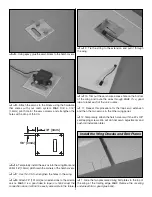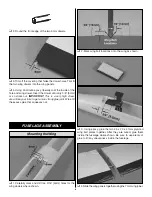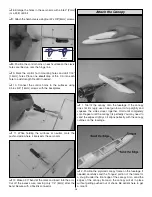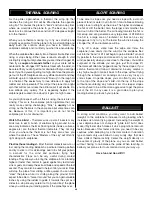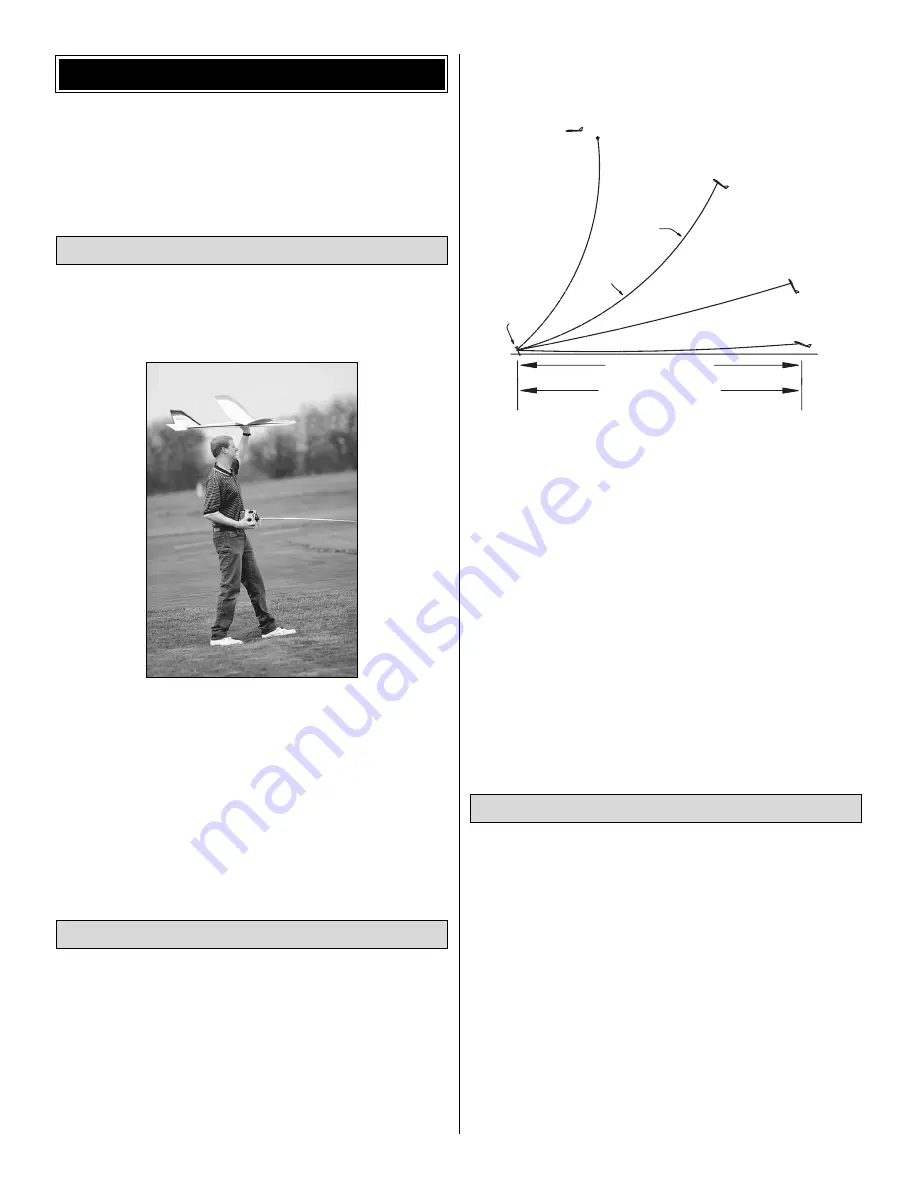
If you are not thoroughly familiar with the operation of R/C
models, ask an experienced modeler to check to see you
have the radio installed correctly and all the control surfaces
do what they are supposed to.
It is a good idea to do a couple of trim flights before each
flying session to make sure the plane is still in trim and the
radio is working properly.
Hold the SPIRIT ELITE ARF under the wing with the nose
pointed slightly down and directly into the wind. Launch the
model with the wings level and the nose pointing at a spot
on the ground about 50 feet in front of you. If the sailplane is
launched with the nose up or launched too hard it will climb
a few feet, stall and fall nose first straight down. With the
nose pointed down slightly the sailplane will accelerate
down until it picks up enough flying speed, then level off and
glide forward. Adjust the trims on your transmitter to get the
plane to fly straight ahead in a smooth glide path.
A hi-start is the most common way to launch your SPIRIT
ELITE ARF. Follow the directions that came with the hi-start
and lay it out directly into the wind. Place the stake at the far
upwind edge of the flying field so the parachute will blow
back onto the flying field.
Hook the parachute up to the tow hook. Pull the plane back
approximately twice as far as the rubber is long or whatever
the hi-start instructions recommend.
Hold the plane above your head with the wings level and the
nose pointed slightly up and directly into the wind. Give the
plane a push forward to get it flying and it will climb up like a
kite. You should not have to touch the elevator during the
launch. Use the
rudder stick
to keep it going straight up.You
will find the ailerons are not very responsive during the first
part of the launch. As the rubber relaxes the plane will fly off
the hi-start.
Use these flights to get the “feel” of the controls and the SPIRIT
ELITE ARF’S flying characteristics. Adjust the trims on your
transmitter (a little at a time) until the plane will fly straight and
level with the transmitter sticks in their neutral positions.
The SPIRIT ELITE ARF is a very gentle plane that flies well
in light to moderate winds. Practice coordinating ailerons
and rudder until you can get a tight turn that is relatively flat.
Bank the sailplane with rudder and ailerons first, then add
elevator to pull it around. When setting up to land, point the
nose into the wind just downwind of where you want to land.
Line up with your landing spot and slowly feed in flaps (or
Crow). Add more or less flaps to control your descent angle
and speed so you end up hitting the spot.
First Flights
TYPICAL HI-START LAUNCH
Release
Parachute opens and pulls
Hi-Start back downwind.
String
Rubber
Stake
Sailplane climbs steeply
Launch
600' – 1000'
185M – 300M
Hi-Start Launch
Trimming Flights
FLYING
20


